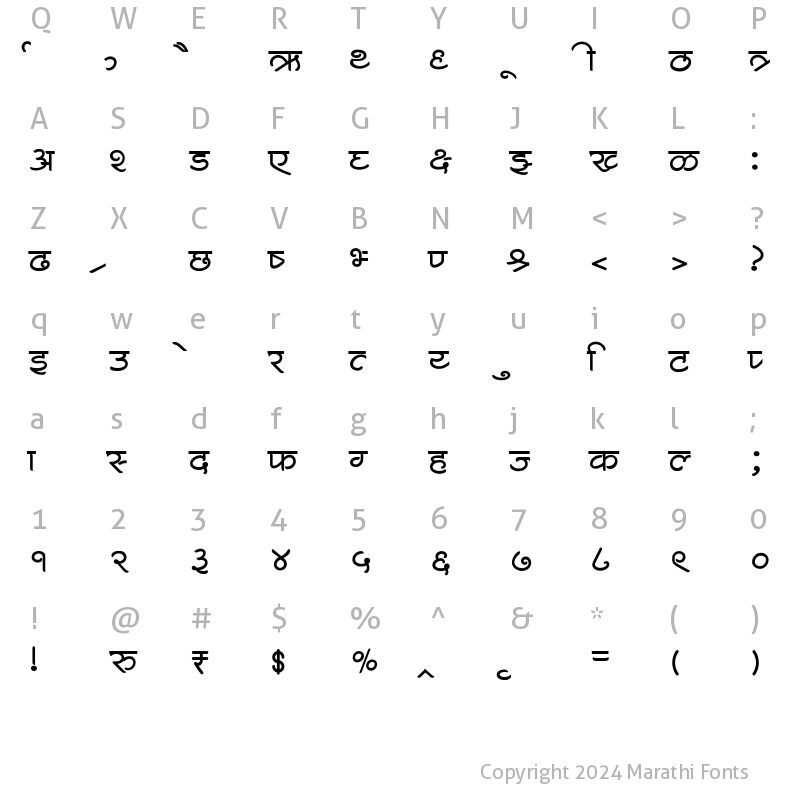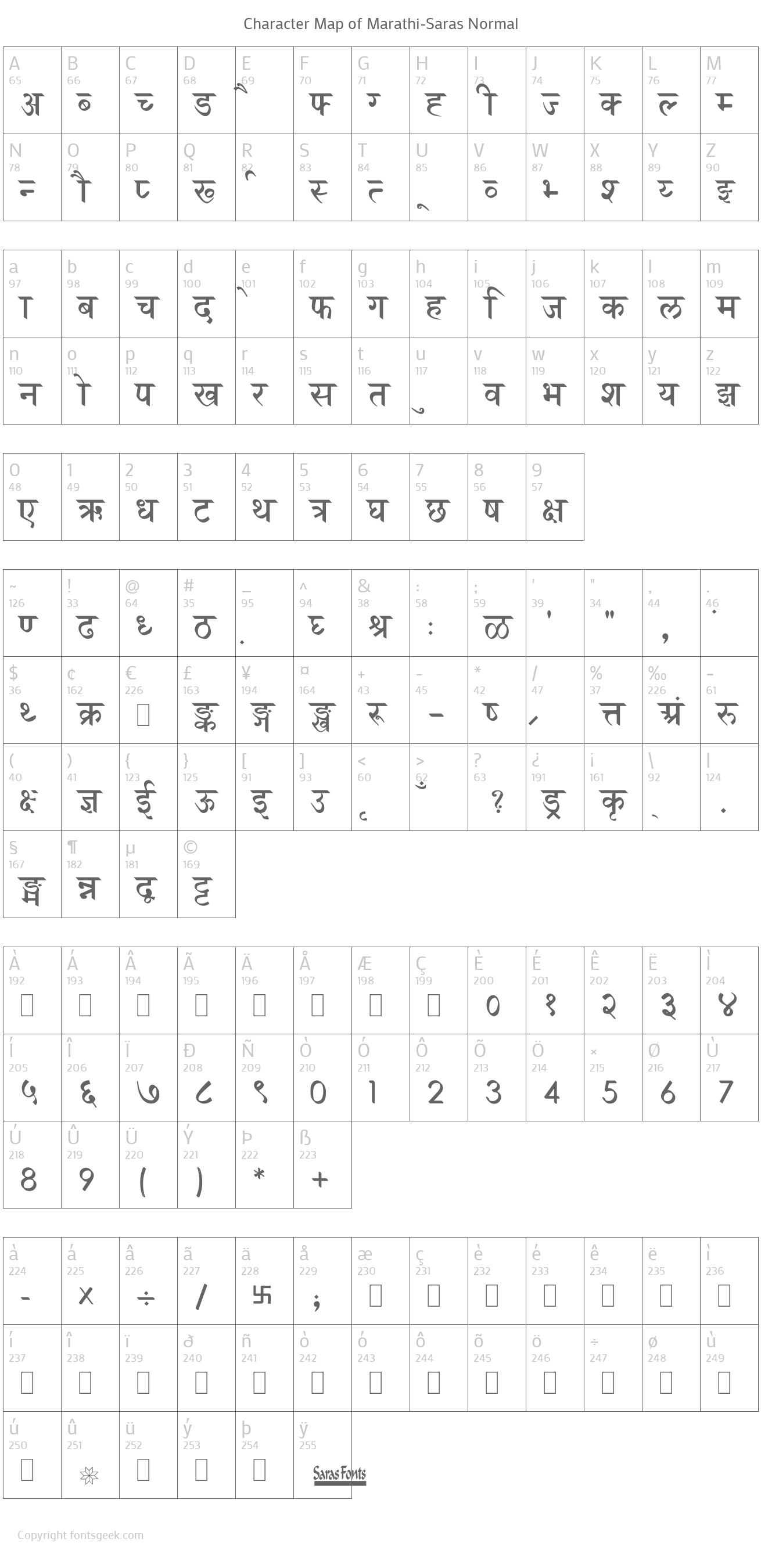
Hinting information is contained in three tables within the font-’cvt’, ‘fpgm’, and ‘prep’.
#Marathi font .ttf file manual#
Manual hinting can triple the time it takes to design a font, but it is sometimes worth the investment. For example, compare the on-screen display quality of Times New Roman (which has been very thoroughly manually hinted) against SILDoulos (which has been auto-hinted using a font design tool). If hinting is done well, the results are dramatic. The best hints are created manually by highly skilled people using special tools. Most font design tools provide a feature to auto-hint the glyphs a user draws, but the result varies from passable to terrible depending on several factors.
#Marathi font .ttf file code#
The hinting code is very complicated and very few people interact directly with it. These instructions move some of the points which define the glyph so that they are positioned well in relation to the grid onto which the glyph is to be drawn (shown above). In addition to the basic mathematical data that describes each glyph’s outlines, the font can store a set of ‘instructions’ (called hints) which are executed when the glyph is drawn on screen. There are two approaches to solving this problem of alignment. The ‘m’ on the right has been adjusted to fit the available pixels better. The ‘m’ on the left below is malformed because of bad alignment. See “Character to Glyph Mapping” below.Īt low resolutions (on a computer screen), slight differences in how an outline aligns with the available pixels on a device can make a large visual difference. A particular glyph is identified by a glyph id, which is used exclusively throughout the font to identify that glyph. The ‘glyf’ table contains the data describing each glyph in the font. In such compound glyphs, each component glyph has placement and optional transformation data associated with it. An ‘acute e’ could be composed of the glyphs for ‘e’ and ‘acute’. A glyph may consist of references to other glyphs which are combined to make the new compound glyph. Drawing the glyphs is an art in its own right.Īnother way that a glyph may be specified is in terms of other component glyphs. The paths are filled with pixels to create the final letter form. A lower case ‘i’ has two paths, one for the dot and one for the rest of it. A path is simply a closed curve specified using points and particular mathematics. TrueType fonts describe each glyph as a set of paths. 1 Glyphs (‘glyf’)Īll fonts contain glyphs. For more details, see the reference documentation ( Microsoft, Apple, Adobe, ISO/IEC). This section is only concerned with the tables which were part of the original TrueType specification and which are still used in OpenType, AAT, and Graphite to describe glyphs and provide general font data. SIL’s Graphite smart rendering system works by adding tables, too. Apple also added tables to TrueType to support a different smart rendering system producing the Apple Advanced Typography ( AAT) font specification. The new specification, which added more tables, was called OpenType. Later Microsoft and Adobe expanded the specification to support smart rendering and PostScript glyphs. The TrueType specification was developed by Apple and adopted by Microsoft.


Each table and the whole font have checksums.

The file may contain only one table of each type, and the type is indicated by a case-sensitive four letter tag. There is a directory of tables at the start of the file. A TrueType font is a binary file containing a number of tables. TrueType fonts are scalable which means the glyphs can be displayed at any resolution and any point size (though the glyphs may not look good in extreme cases).
#Marathi font .ttf file mac os#
The primary font technology used on Microsoft Windows and the Mac OS is based on the TrueType specification.


 0 kommentar(er)
0 kommentar(er)
